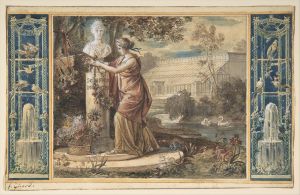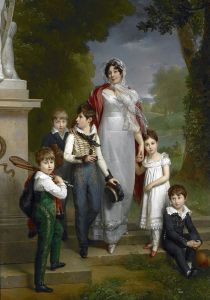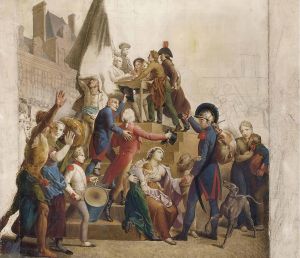
Belisarius
A hand-painted replica of François Gérard’s masterpiece Belisarius, meticulously crafted by professional artists to capture the true essence of the original. Each piece is created with museum-quality canvas and rare mineral pigments, carefully painted by experienced artists with delicate brushstrokes and rich, layered colors to perfectly recreate the texture of the original artwork. Unlike machine-printed reproductions, this hand-painted version brings the painting to life, infused with the artist’s emotions and skill in every stroke. Whether for personal collection or home decoration, it instantly elevates the artistic atmosphere of any space.
François Gérard's painting Belisarius is a notable work of art created in 1797. Gérard, a prominent French painter of the Neoclassical period, was a student of Jacques-Louis David, one of the most influential artists of the era. Gérard's Belisarius reflects the Neoclassical style, characterized by its emphasis on clarity, order, and classical themes.
The painting depicts the Byzantine general Belisarius, a celebrated military commander under Emperor Justinian I in the 6th century. According to historical accounts and popular legends, Belisarius was instrumental in reclaiming lost territories of the Roman Empire, including parts of North Africa, Italy, and Spain. However, later in his life, he was allegedly accused of treason, blinded, and reduced to begging for alms. This story, though debated among historians, became a popular subject in art and literature during the 18th and 19th centuries, symbolizing the themes of injustice, loyalty, and the fall from grace.
In Gérard's painting, Belisarius is portrayed as a blind and destitute figure, seated on the ground with a young boy by his side, who is believed to be his guide. The composition emphasizes the pathos of the scene, with the general's dignified yet sorrowful expression contrasting with his impoverished state. The boy, holding a helmet for collecting alms, adds to the emotional weight of the image. The background features classical architectural elements, reinforcing the historical and Neoclassical context of the work.
The painting was well-received at the time of its creation and contributed to Gérard's reputation as a skilled artist capable of conveying complex emotions and narratives. It also reflects the broader cultural interest in classical antiquity and moral themes that were prevalent during the late 18th century, particularly in Revolutionary France. Gérard's Belisarius aligns with the Enlightenment ideals of virtue and the critique of tyranny, resonating with contemporary audiences.
Today, Belisarius is recognized as an important example of Gérard's oeuvre and the Neoclassical movement. It is housed in the Musée des Beaux-Arts in Lyon, France, where it remains a significant piece in the museum's collection. The painting continues to be studied and appreciated for its artistic merit and historical resonance.

















